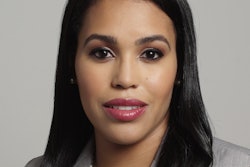Bridging the Communication Gap “Anxiety Over Demographics” was the title of our edition last year in which we focused on the future of Hispanics in higher education. Since then, Census 2000 revealed that the Latino population has become the most populous minority a decade earlier than projected and many are wondering how this demographic shift affects higher education institutions as well as the ballot box.
I’ve often felt that Blacks and Hispanics in this country share many of the same socio-economic challenges, less on matters concerning language and immigration. Still, most underrepresented groups strive to improve their lives — using education as the great equalizer.
Just as we were going to press with this edition, the Pew Hispanic Center released a report which found U.S.-born Hispanic high school graduates enroll in college at nearly the same rate as Whites but are much less likely to earn college degrees (see story, pg. 9). The report went on to say that because Hispanic college students tend to be older, graduate from less demanding high schools, and enroll part time, they are less likely than Whites to earn associate’s, bachelor’s or graduate degrees. And before they get to college, 28 percent of Hispanic high school students have dropped out, compared to 7 percent of White students and 13 percent of Blacks.
The thought has been that America’s community colleges could bridge the education gap for Hispanic students and be their first step on the way to a bachelor’s degree. The problem, however, is that most of the students do not ultimately transfer to a four-year institution. The challenge is educating Hispanic students and their parents about the U.S. educational system. As you will read in Kristina Lane’s article, “Taking it to the Next Level,” many students and their parents do not know the difference between a two- and four-year institution. It will be up to all types of higher education institutions, not to mention high school guidance counselors, to communicate the requirements and benefits of college to this population, a good percentage of which is foreign born.
When I read that some Hispanic students and their parents are confused about the U.S. educational system, I couldn’t help but think this problem is not unique to this population alone. I know there are many Black, American Indian and other American-born students who are not clear about what exactly it takes to get into college. Many would not be able to explain the differences between community colleges and four-year institutions other than the amount of time it takes to graduate. There are many students who were born in this country and have been entrenched in this country’s educational system their whole lives, but do not pursue higher education because of lack of exposure and the simple fact that no one has explained to them the many options — post high school — that are open to them. As a result, some students never apply to college and others apply to schools that are less competitive than what they should be aiming for. So there is not only an education gap, but there is a communication gap as well that needs to be bridged.
There are several informative articles in this edition, which we hope will offer a better perspective on the status of Hispanics in higher education as well as their future political impact.
Kendra Hamilton’s article, “Getting a Piece of the Political Power Pie,” highlights the challenges legislators and policy-makers face when appealing to this diverse population come election time. And lastly, Lydia Lum, in “Speaking the Patient’s Language,” reports on the University of Texas-Austin’s efforts to more effectively serve their Hispanic clientele by requiring their health care students to enroll in Spanish courses — a move which has some people questioning who is responsible for the language barrier.
Hilary Hurd Anyaso
Editor
© Copyright 2005 by DiverseEducation.com



















